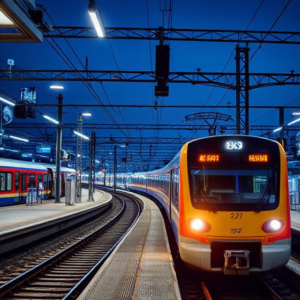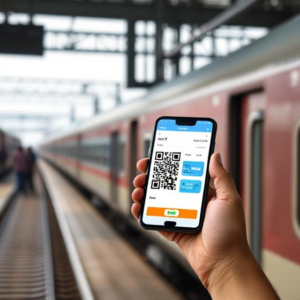Low-Cost Rail Travel Initiatives
Low-cost rail travel initiatives are all about making train travel more affordable and accessible to everyone, especially for people from lower-income or underprivileged backgrounds. These initiatives help ensure that rail transport is not just for the wealthy, but for all citizens, no matter their financial situation. Let’s break it down into easy-to-understand points:

1. Efforts to Reduce Fares and Increase Accessibility to Rail Transport for the General Population:
- Affordable Train Fares: One of the main goals of low-cost rail travel initiatives is to lower train ticket prices. This is done by subsidizing fares or introducing budget-friendly trains that are still comfortable but have a more affordable price. The idea is to make trains accessible to more people, especially for daily commuters or long-distance travelers who cannot afford expensive travel options like flights or taxis.
- Special Budget Trains: Indian Railways has introduced several low-cost trains, like the “Antyodaya Express” or “Satyagrah Express,” that offer basic but affordable services to passengers. These trains are designed to provide affordable travel options without compromising on safety.
- Affordable Ticketing: Some stations and routes have implemented special offers like discounts for frequent travelers or cheaper fares during off-peak hours. This helps lower travel costs for people who travel frequently, making rail travel a more affordable daily option for the general public.
2. Special Programs or Services for Underprivileged Groups:
- Subsidized Fares for Underprivileged Groups: Indian Railways offers discounted fares to people from lower-income groups or those who may have difficulty affording standard travel. For example, people from economically weaker sections (EWS), students, and senior citizens often get discounts on ticket prices. This helps make travel more affordable for those who might otherwise struggle to pay for regular fares.
- Special Services for Rural and Remote Areas: To help people in remote villages and rural areas, the railway has introduced train services that connect less accessible areas with major cities. These trains are priced lower to cater to the needs of people who rely on affordable travel for things like education, work, and healthcare.
- Train Services for Women and Children: Some special trains, like “Ladies Special” trains, offer affordable and safe travel options specifically designed for women. Additionally, there are often discounts for children to make it easier for families to travel at lower costs.
3. Discounts and Offers for Marginalized Communities:
- Discounts for Marginalized Groups: Indian Railways has special discount programs for marginalized communities, like SC/ST (Scheduled Caste/Scheduled Tribe) passengers. People from these communities can often avail of concessions or special train services at reduced prices to ensure that they have the means to travel affordably.
- Special Offers for Disabled Passengers: Railways also provides discounts for differently-abled passengers, which helps make travel more accessible for them. This includes not only lower ticket prices but also assistance with boarding and disembarking at stations.
- Seasonal Discounts and Offers: During certain festivals or holidays, Indian Railways offers seasonal discounts or special offers to make travel more affordable for people planning to visit family or go on vacation. These offers make it easier for people from marginalized communities to travel without worrying about high ticket prices.
In Summary:
Low-cost rail travel initiatives are designed to make train travel affordable for everyone, especially for underprivileged and marginalized groups. Through special fare reductions, budget-friendly trains, and discount programs, Indian Railways ensures that people from all walks of life can access rail transport. Whether it’s subsidized tickets, special services for rural areas, or discounts for women, children, or marginalized communities, these initiatives help ensure fair access to travel for all passengers in India.
Keywords: Indian Railway, Railway











